* Photographs *
A/N: Due to the limit of pictures allowed per chapter, I've made this secondary chapter featuring a collection of credited photos featuring Lt. César Basa, the 6th Pursuit Squadron, PAAC, old airfields, the iconic Boeing P-26A Peashooter, and old Manila maps. If one would notice, there were a few existing portraits of Basa as I've tried to post the photographs in a chronological order, incorporating those of the 6thPursuit Squadron and PAAC. The last few photos were that of the airfields, Boeing P-26A Peashooter, and Maps of Manila.
* * *
1. Ateneo de Manila University's Blue and Whites Basketball Team (Blue Eagles) 1937-1938
I was unsure and unable to identify who among them was or could be Basa but as mentioned from the previous chapter, he was a celebrated basketball player of the team to be part of Ateneo's NCAA basketball win of 1937.
Source: Olivares, Rick. "The Last of the Blue and Whites: A Story of the 1937-38 Ateneo Basketball Team ." Bleachers Brew, 16 Aug. 2008, https://bleachersbrew.blogspot.com/2008/08/last-of-blue-whites.html.
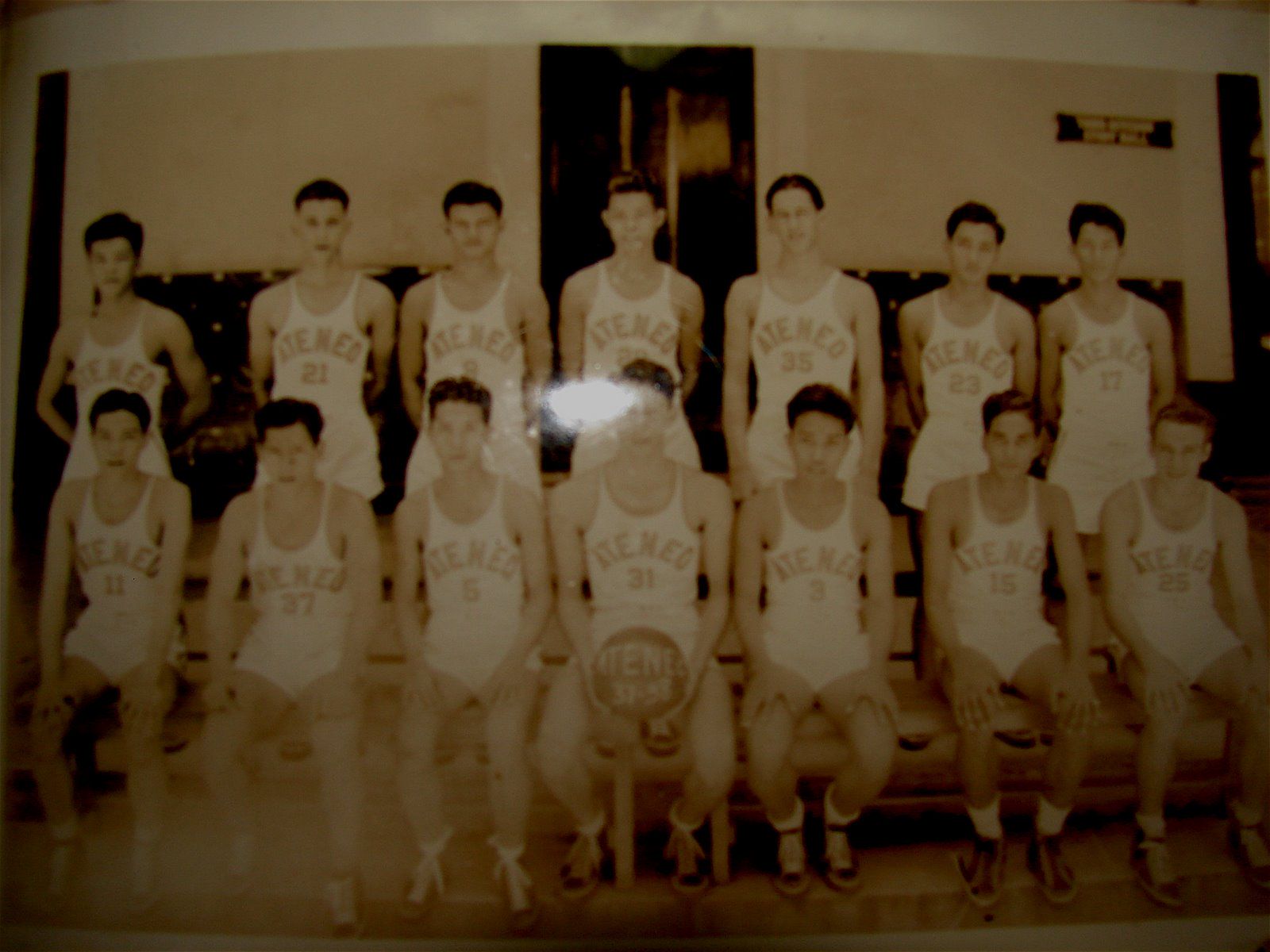
* * *
2. César Fernando Ma. T. Basa, Bachelor of Science in Industrial Technology Major in Chemistry, Class 1939
Definitely a graduation portrait of Basa upon graduating BS Industrial Technology Major in Chemistry with honors at Ateneo de Manila University Class 1939. Others listed his course to be BS Industrial Chemistry; but whatever it was, they've been consistent to mention that he graduated with flying colors.
Source: Villarroel, Hector K., and Carlos Quirino. Eminent Filipinos. Philippine Textbook Publishers, 1965. From the collection of the Filipinas Heritage Library under Ayala Foundation, Inc.
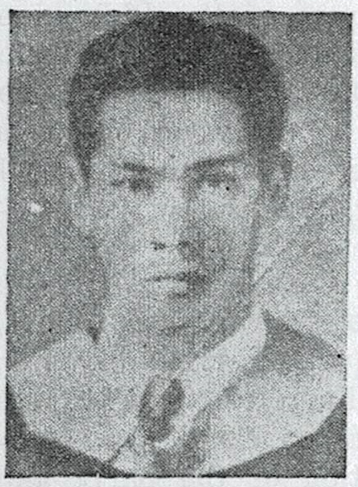
* * *
3. Lt. César Basa in uniform
Found this a little strange of him as it was a little not like him based on the earlier portraits I've seen of him. Sent it to a close friend and told him, "I think this is like poster boy upon entering flight training. I mean, come on, he looked so young here and despite the presence of the epaulettes, there's the absence of wings (badge) and collar pins." He laughed and said that, "Nakakatanda ba ang flying?" Sent him again my ID picture from my airmen's license (which wasn't updated ever since I've started flight training last 2018), and he commented, "Ah, right. Baby face lahat ng nagsisimula ng flight training. Nakakatanda pala talaga ang mag-piloto."
I think flying is indeed stressful; and despite my 160+ flying hours, I'll say that no flight is the same for one to be complacent of the work. In short, it is indeed draining and exhausting no matter how fun and enjoyable it is.
Source: Neri, Francis. "The Greats of the Philippine Fighter Force: Cesar T. Basa." Pinoy Aviators, https://www.facebook.com/media/set/?set=a.623008064400103&type=3.
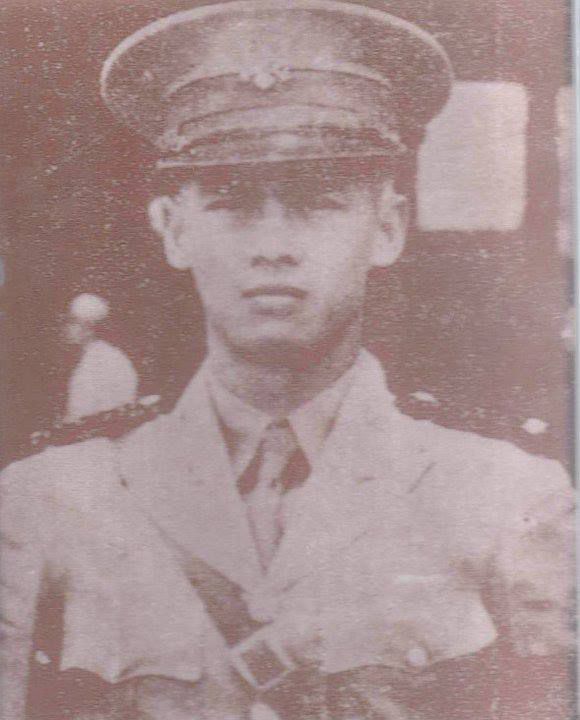
* * *
4. Who is which? (Debatable)
These two portraits are debatable. I wanted to trust the sources inputted by Col. Jesús Villamor in his book, They Never Surrendered: A True Story of Resistance in World War II, from where these two portraits were recovered. As per the comment, the first portrait was Basa and the second was Lt. Antonio Mondigo, a Filipino-German PAAC ace pilot. However, I couldn't trust such comment at all as the latter portrait was that of closest to the other credited portraits of Basa, just as the other was very much like Mondigo.
Whatever portrait of his was the correct one (though I was very sure that it would be the latter), when the portraits were taken was a matter of debate, too. Especially with how the latter portrait appeared to be some sort of an ID photo.
So, listen up (or read on) with my explanation why I believed that there had been a mixed-up and Basa was the one on the latter portrait at all. The facial structure mirrored his graduation picture the most, and not to mention the hairstyle. (Come on, dude, did you ever change your hairstyle?) To add as well were the ears, eyebrows and eyes. (I mean, should I even go on with the rest of his face?)
Source: Villamor, Jesus A., and Gerald S. Snyder. They Never Surrendered: A True Story of Resistance in World War II. Vera-Reyes, 1982. From the collection of the Filipinas Heritage Library under Ayala Foundation, Inc.
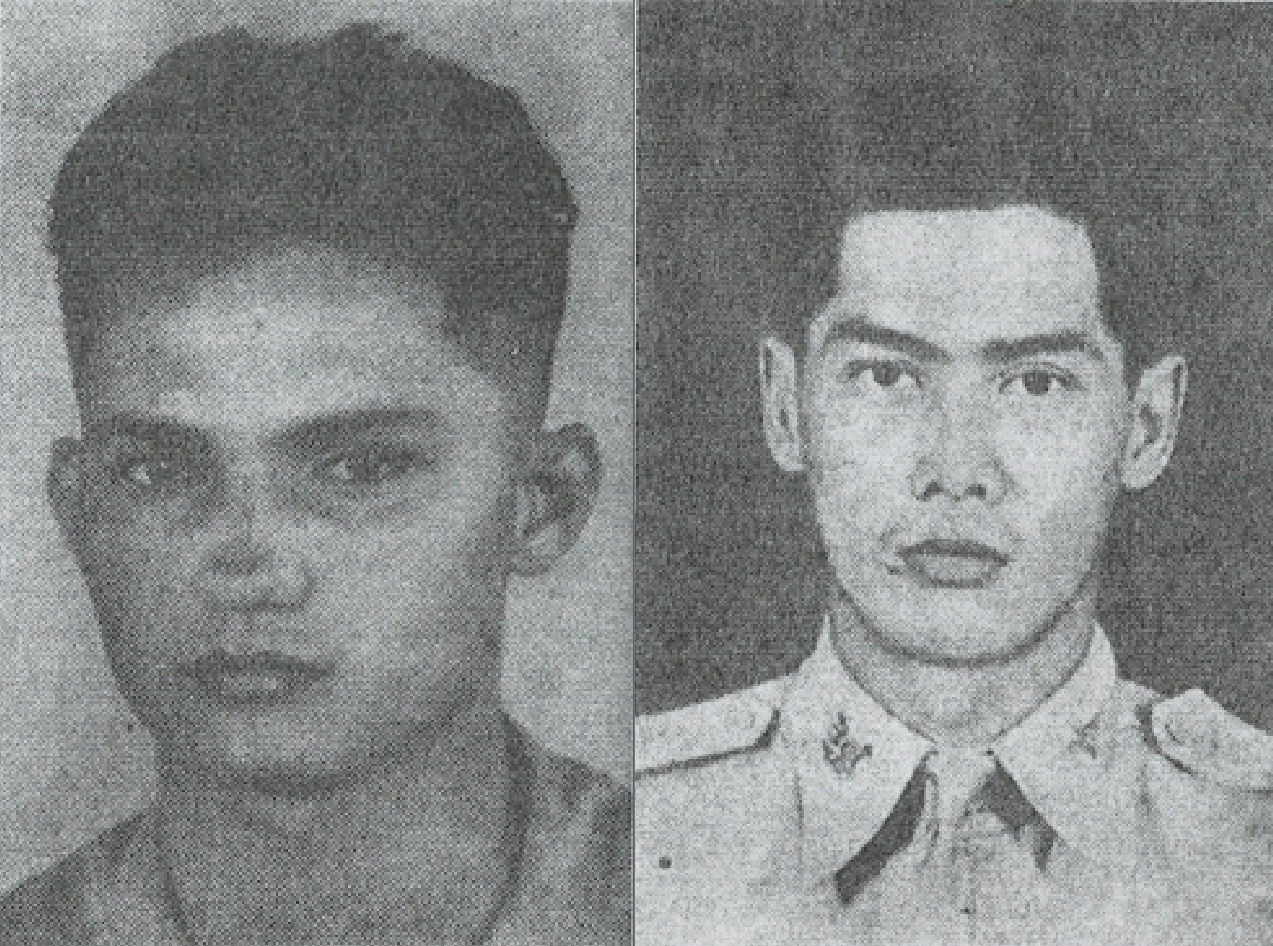
* * *
5. Lt. César Basa's most known portrait
How come I say that this was his most known portrait? Just look it up online and this was the most used portrait of him. Not to mention that there were two mural paintings at the Philippine Air Force Aerospace Museum which included him; and this was also one of the two photographs that they've used to credit him, too. There were assumptions that the portrait was taken on 30 September 1941, but there was no further record of it at all except from that of Flickr where the picture was found. I know that this portrait was taken in a later date as it became obvious that his features had matured and gone were the teenage boyish charms. And also, well, the collar pins and the basic pilot wing (badge); since badges at that time were only three, as per the Philippine Air Force; the command pilot, the senior pilot, and the basic pilot. Given his years of service, there wasn't meant to be any hard-feelings in the ranking at all.
After all, a pilot's wing (badge), aside from the epaulettes, was the hard-earned "wings" that we call forth. Since, as per tradition, wings were given upon a pilot's first solo; only a few received theirs after the first license check for a private pilot. I doubt that there had been a centralized or unified governing authority for it back then, as the International Civil Aviation Organization, the worldwide governing authority of flying and aviation itself, was only created at the same time as that of the United Nations, which was after the Second World War. Though there had been surely an earlier one, I doubt that it had been as strict as that of the current ICAO; still, no matter what others might say, earning such wings was one of, if not the most, important milestones and achievements of a pilot that gave him the title to be referred as such.
I'll be honest to say that when I first decided to find out more about the man behind the naming of the Basa Air Base, and found this portrait of him... well, yeah. I fangirled? Because, sorry, guys, mas gwapo siya compared kay Goyo para sa akin.
Source: Presidential Museum and Library PH (2010-2016). "Lt. Cesar Fernando Basa." Flickr, Yahoo!, 30 June 2015, https://www.flickr.com/photos/govph/19293063681/in/album-72157655193750366/.
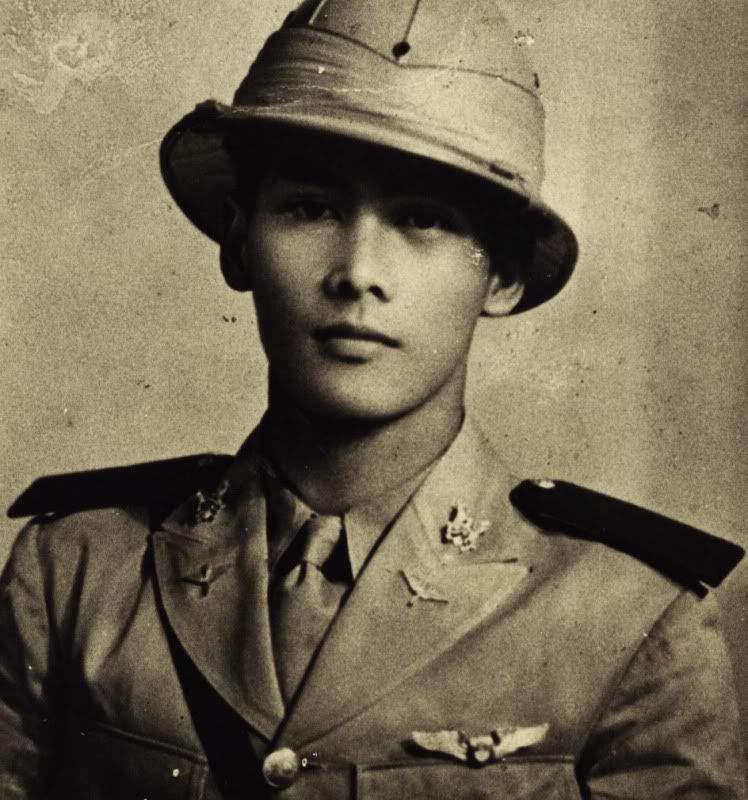
* * *
6. Lt. César Basa posing on his plane
I used the same title used by the Presidential Museum and Library PH (2010-2016) for the picture. I won't actually say that it was his plane since there were more pilots than there were planes at that time, but I guess the meaning behind the title was that "one of the planes he flew". Despite the lack of mentioned date for this photograph, this could only be one taken from August 1941 to December 1941, as the plane was visibly a Boeing P-26A Peashooter, and the said plane was only given to the PAAC after its induction to the USAFFE.
He also appeared quite much more mature on the photo, but look at that bright smile. Ask any pilot to pose with a plane he flew and he would definitely have the same smile. I mean, who will not be genuinely happy with their bibi planes? 🥹🥰💙
Source: Presidential Museum and Library PH (2010-2016). "Lt. Cesar Basa Posing on His Plane." Flickr, Yahoo!, 30 June 2015, https://www.flickr.com/photos/govph/19102903039/in/album-72157655193750366/.
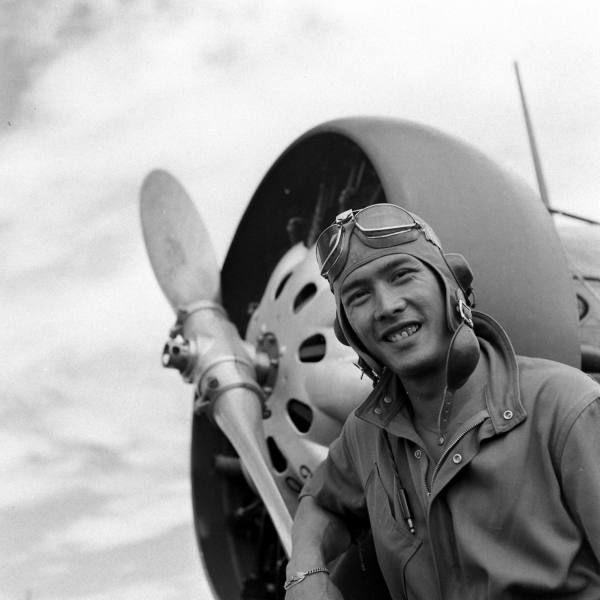
* * *
7. PAAC pilots in between trainings (Debatable)
The reason why I listed this as debatable was because of the fact that this was only an assumed photograph which featured Basa and Mondigo; but this was definitely a photograph of PAAC pilots during their free-times. So, who's who? I assume that the bored looking fighter pilot was Lt. Antonio Mondigo (as earlier mentioned, he was Filipino-German, and other photographs of him existed that could very much support this assumption of mine), and the black chess player was Lt. Cesar Basa. Okay, hear me out, it wasn't actually a big guess or what but let's say deduction skills? Aside from the facial structure and again the hairstyle, the giveaway was the bracelet.
Wait. Am I saying that it was because of that assumption alone? First of all, it could be an army bracelet. Yes, it is. But World War II was the time wherein dog tags are much more common; not to mention that army bracelets may or may not differ in design. Looking back to the other photographs of PAAC, they didn't have the same bracelet; not to mention that army bracelets were supposed to be flat on both sides, except for the arms of the squadron. For one, even Villamor only recorded having a dog tag and not an army bracelet; in short, it wasn't a military issued one.
Again, it was also not strange to find out such an "intelligent" dude as Basa to be a chess player, too. Finding him to be a basketball player and swimmer was already enough, but also finding out that he was a football and track & field player was another mind-blowing moment; so, it was not strange at all if this was him playing chess. Not strange at all.
Source: Presidential Museum and Library PH (2010-2016). "The Philippine Air Force." Flickr, Yahoo!, 9 Feb. 2023, https://www.flickr.com/photos/govph/albums/72157655193750366.
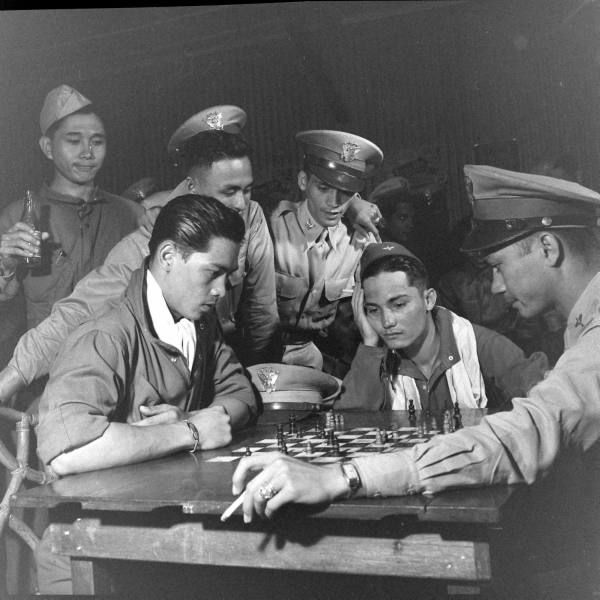
* * *
8. 6th Pursuit Squadron playing cards
Well, can you recognize anyone at all? No one, right? But according to the comment given by Villamor of this picture, it was the 6th Pursuit Squadron playing cards to wile the time. Very much with how they have time for chess and basketball matches, too.
Source: Villamor, Jesus A., and Gerald S. Snyder. They Never Surrendered: A True Story of Resistance in World War II. Vera-Reyes, 1982. From the collection of the Filipinas Heritage Library under Ayala Foundation, Inc.
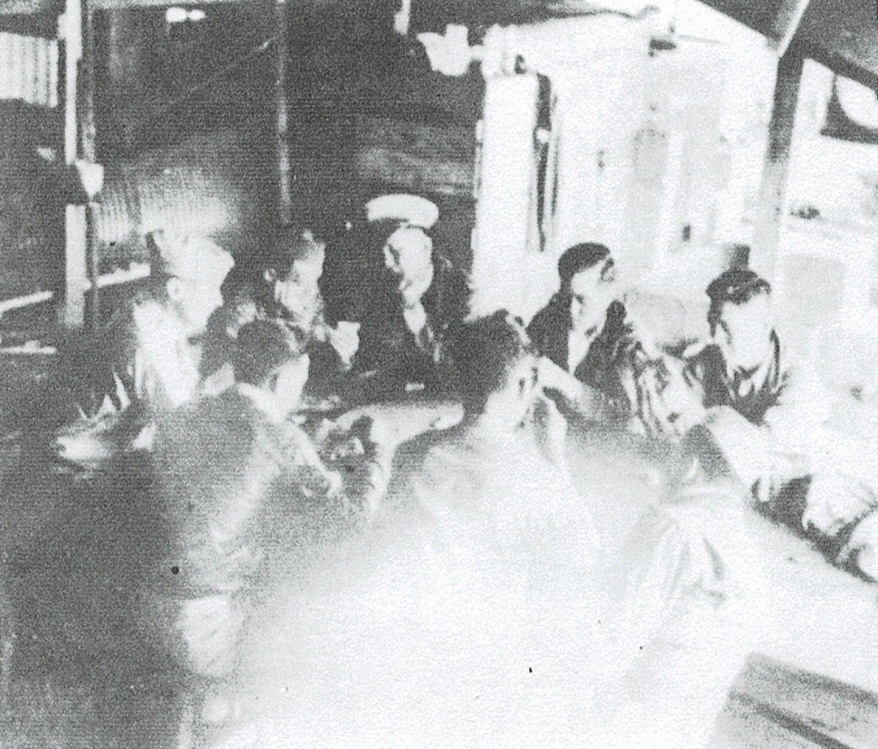
* * *
9. Capt. Jesús Villamor (with white scarf) and his squadron mates at Nichols field (December 1941)
Borrowed the same title for the photo by the Presidential Museum and Library PH (2010-2016), and it was dated on December 1941. With how the squad lacked the urgency for a few of them to manage some smoke and have their photos taken, this could've been taken on 8 December 1941. It was impossible to be taken for other days because the 6th Pursuit Squadron was stationed at Batangas Airfield beforehand, and only on 8 December 1941, at the first day since the bombing of Pearl Harbor, were they recalled back to Nichols Field in Manila. Not to mention that on that day, Iba and Clark were the bombed areas, and it would only be by the early morning of 9 December 1941 that Nichols Field, along with Zablan and Nielson, were bombed.
And just a note, smoking isn't even allowed close to planes or even on the ramp area as cigarettes are considered as foreign object debris or FOD; well, of course, they surely don't know of this at that time?
Source: Presidential Museum and Library PH (2010-2016). "The Philippine Air Force." Flickr, Yahoo!, 9 Feb. 2023, https://www.flickr.com/photos/govph/albums/72157655193750366.
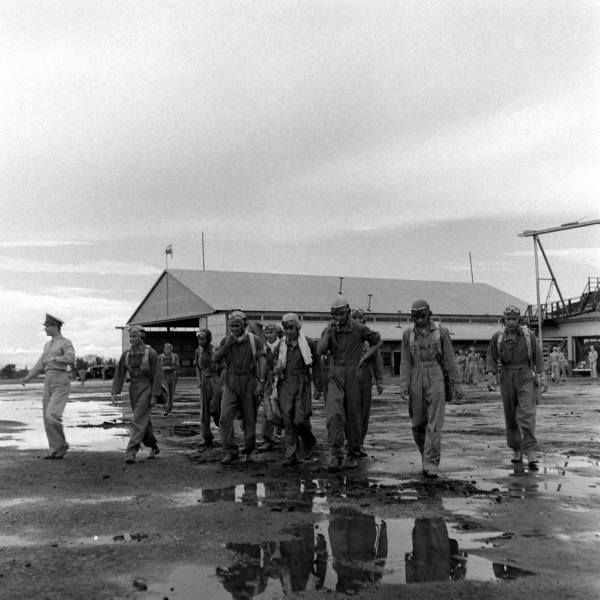
* * *
10. The 6th Pursuit Squadron
With that popular portrait of Lt. Cesar Basa, this photograph was the other one that could be found in the Philippine Air Force Aerospace Museum at Villamor Air Base featuring him and the 6th Pursuit Squadron. Commentary at the museum also stated the photograph below as: "Last known photo of LT CESAR M BASA AC (first man on the left of CPT VILLAMOR), prior to his untimely death against seven (7) Japanese Zero fighters over Batangas Field on 12 December 1941." Hence, I've listed this photograph as the last one for the chronological order featuring him, PAAC and the 6th Pursuit Squadron.
Aside from him (the one without the flight cap and goggles), the only ones who were identified on the photo were Lt. Manuel Conde (second man from the left) and Capt. Jesús Villamor (fifth man from the left). A wild guess of mine, as mentioned from the previous chapter, the man on the right was Lt. Antonio Mondigo (the initials "A.K.M" were visible on the strap of his goggles); and the first man from the left was Lt. Salvador Manlunas (his last name visible on the strap of his goggles, too).
Source: Diano, Eduardo. "The Air Battle over Batangas Airfield, Batangas City on December 12, 1941." Pinoy Aviators, 27 Aug. 2019, https://www.facebook.com/PinoyAviators13/photos/a.629572590410317/2551041041596786/. Photograph by Carl Mydans for LIFE.

* * * OTHERS * * *
Batangas Airfield
The Batangas Airfield was the headquarters of the PAAC's 6th Pursuit Squadron since October 1941 until the outbreak of World War II in the Philippines. It was one that many considered to be a forgotten airfield as the extant air base in Batangas, the Fernando Air Base in Lipa, wasn't made on this site. Only photographs as this showed where the Batangas Airfield could previously be found, though mentioned to be situated at Batangas City itself. As of now, the remnants of the said airfield was marked by a historical marker for the presence of PAAC's 6th Pursuit Squadron there, the eventful battle over its airspace on 12 December 1941, and the death of Lt. Cesar Basa on the aforementioned fighting.
Source: Buhay Batangas. "The Forgotten Military Airfield in Batangas City." Batangas History, Culture & Folklore, 1 Mar. 2018, https://www.batangashistory.date/2018/03/airfield.html.
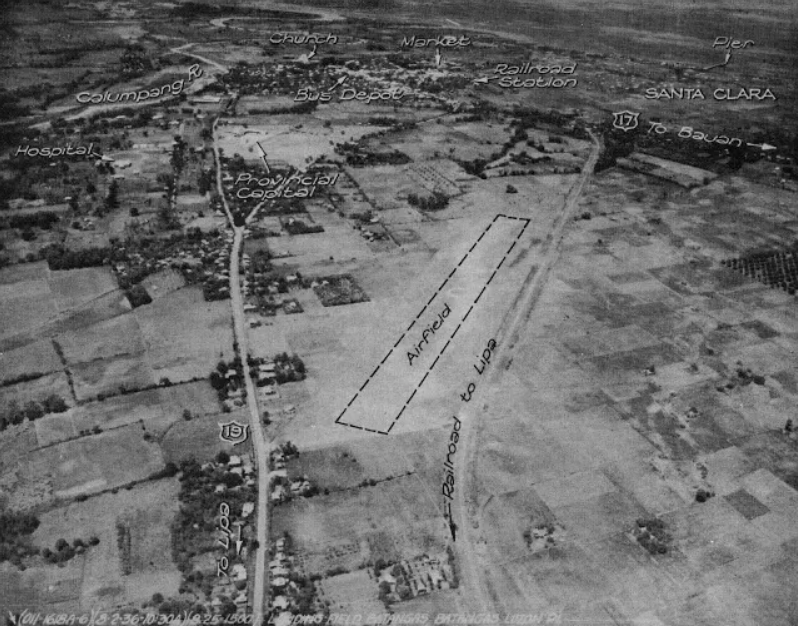
* * *
Nichols Airfield
Nichols Airfield was one of the three airfields in Manila at the time of the American regime; the other two were the Nielson Airfield at Makati (now the center of the Makati business district as its two former runways: primary runway 12/30 became Ayala Avenue, and secondary runway 07/25 became Paseo de Roxas; and its former tower converted to a high-end restaurant known as the Blackbird) and the Zablan Airfield at Camp Murphy (now known as Camp Aguinaldo). As per mentioned by other sources, Basa was able to land his crippled plane on the said airfield before being ground strafed by a Japanese Zero and died. Currently, Nichols Airfield is the site of the Ninoy Aquino International Airport and the adjacent Villamor Air Base.
Source: U.S. National Archives and Records Administration
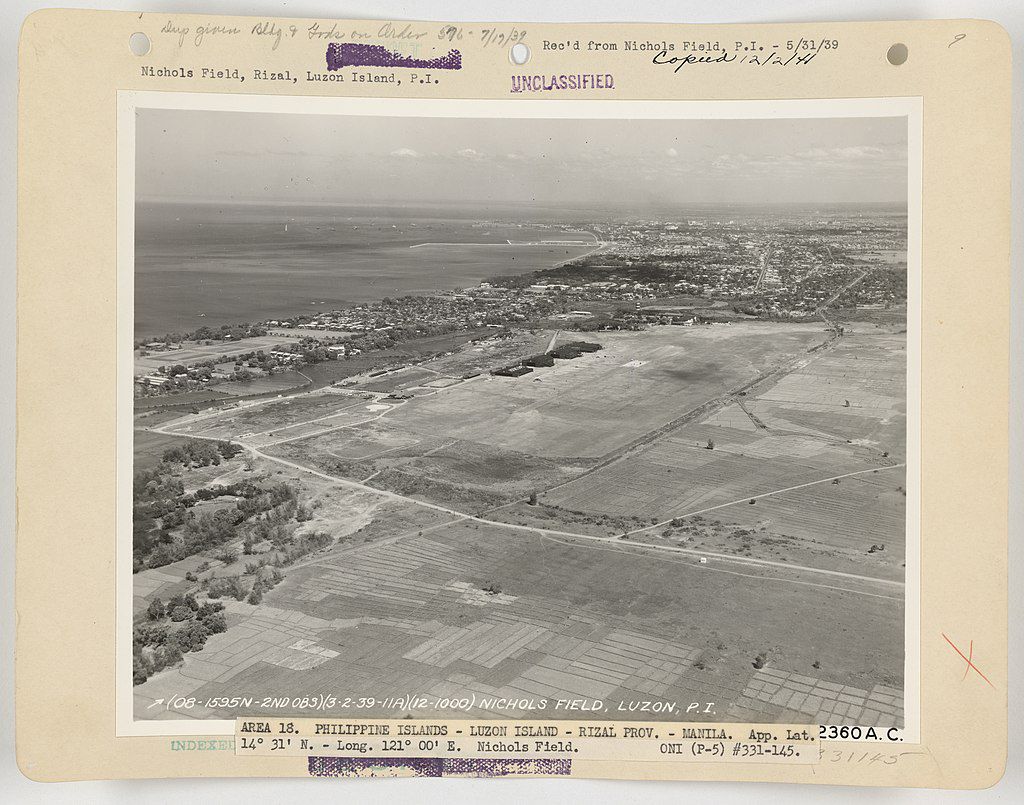
* * *
Zablan Airfield, Camp Murphy
Zablan Airfield was named after Lt. Porfirio Zablan, one of the first Filipino pilots of Class 1920 who've died in 1935 while undergoing advanced flight training in the United States in preparation for his supposed-to-be becoming the first Philippine Constabulary Air Corps (PCAC) Commanding Officer. As Nichols Field became the base of the US Air Force in the country, Nielson Field a commercial airport where the forerunner of Philippine Airlines operated, Zablan was noted to be the headquarters of the Philippine Army Air Corps and was primarily used for pilot training, situated within Camp Murphy, the headquarters of the Armed Forces of the Philippines at that time. It was in the same airfield that Basa was said to finish his flight training before being commissioned upon graduation as lieutenant. Camp Murphy is now known as Camp Aguinaldo.
Source: U.S. National Archives and Records Administration
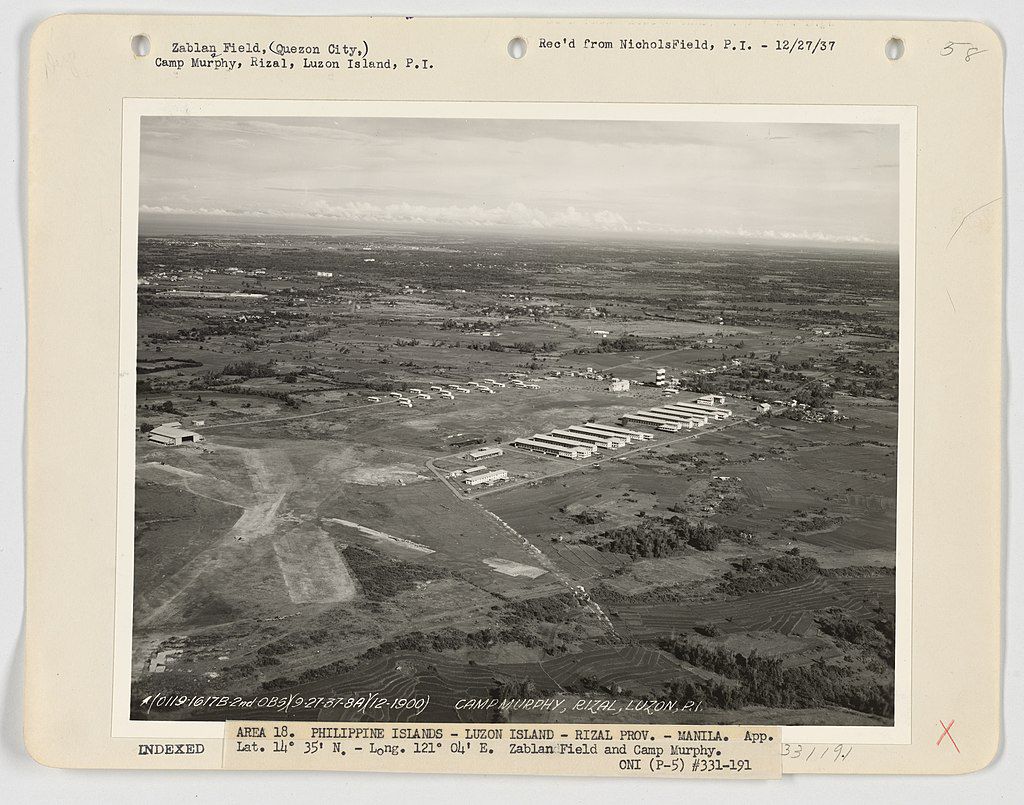
* * *
Boeing P-26A Peashooter
The Boeing P-26A, affectionately called by pilots as the "Peashooter", was the first American production all-metal fighter aircraft and the first pursuit monoplane to enter squadron service with the United States Army Air Corps. Designed and made by Boeing, it was powered by a Pratt & Whitney R-1340-27 Wasp 9-cylinder air-cooled radial piston engine with 600 hp. It was piloted by only one crew, with a maximum speed of 203 knots, a combat range of 310 nautical miles, and a service ceiling of 27,400 ft; and armed with 2 M1919 Browning machine guns and bombs.
At the induction of the PAAC to the USAFFE, the 6th Pursuit Squadron received 12 outof 28 P-26s. Capt. Jesús Villamor and his squadron of P-26s engaged Japanese Mitsubishi A6M Zeros above Zablan and Batangas Fields, and despite being outclassed Villamor and his squadron claimed four kills – one Mitsubishi G3M bomber and three Zeros, two by Villamor himself.
Source: Presidential Museum and Library PH (2010-2016). "The Philippine Air Force." Flickr, Yahoo!, 9 Feb. 2023, https://www.flickr.com/photos/govph/albums/72157655193750366.
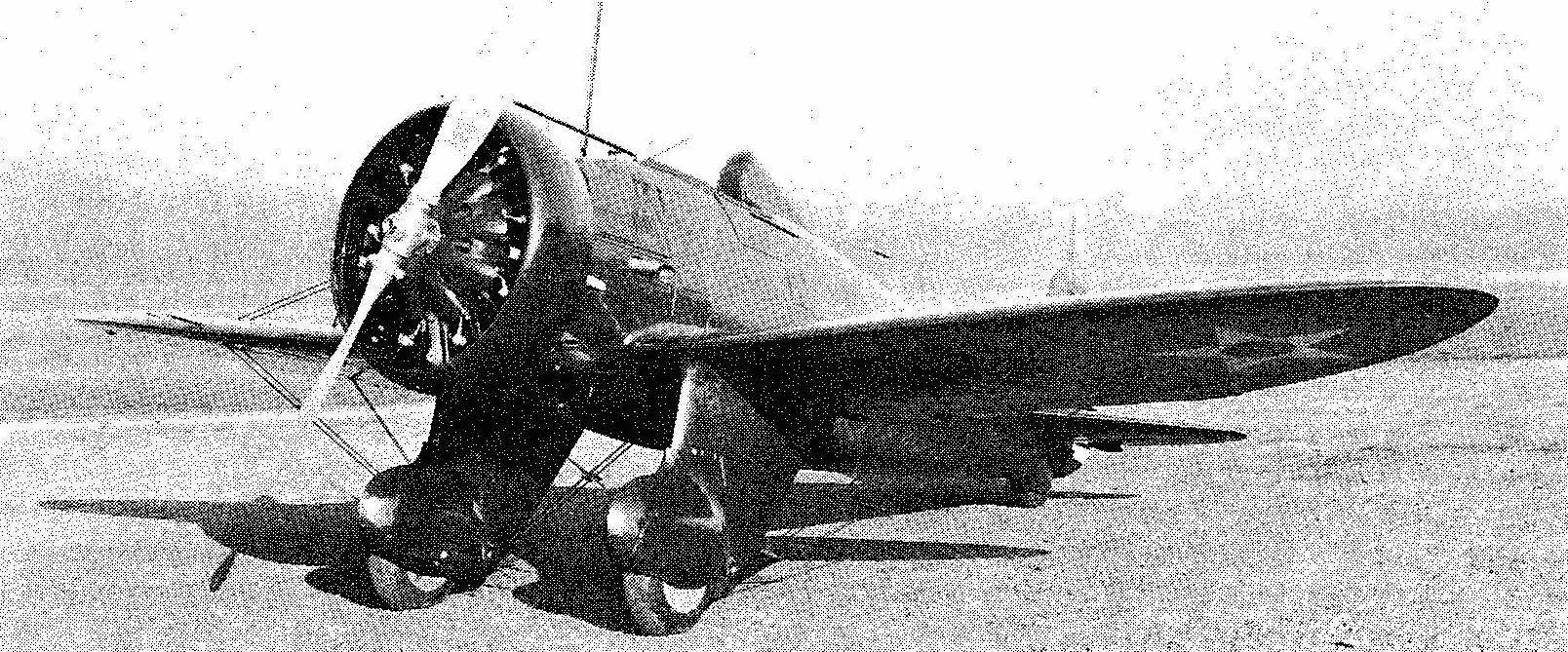
* * *
Boeing P-26A Peashooter (Cockpit)
First of all, I love planes. Training, commercial or fighter planes. I love them all. But I could say that the ones special to me had been the Cessna 172 (because it was our training plane), and Airbus A320 (because it was our first multi-engine rating and the last part of our training to be capable for airline standards). Writing this story and researching the history of the Philippine Air Force, the Boeing P-26A earned a special place in my heart, too. And, okay, an alert from me, because this is where I will go technical. So, the labels were additionally added by me.
First look of the cockpit and I could say that it was very different from what I was used to. Not because this is a fighter plane and a C172 nor A320 wasn't, but because of the six basic instruments itself. These six basic instruments were what we call in aviation as the "six pack", because they are the main instruments of flying and basically the lifesavers. These instruments were the pitot-static instrument Airspeed Indicator, the static instruments Altimeter and Vertical Speed Indicator, and the gyroscopic instruments Heading Indicator, Turn Coordinator and Attitude Indicator. Looking on the cockpit of a Boeing P-26A, only three of the six existed, or rather, at least four (as Magnetic Compass is much more reliable than a Heading Indicator, which was in need of being sync every fifteen minutes). After all, the missing ones, the Vertical Speed Indicator and Attitude Indicator were instruments not considered primary ones but only secondary ones, especially during Visual Flight Rules or the looking outside of the plane than to depend on instruments; because with the right airspeed, you can establish the right rate of climb and descent that the Vertical Speed Indicator shows, and with looking outside at the horizon, you can establish the right perspective if you are climbing and descending as the Attitude Indicator shows. Another thing I've noticed was their placement, the Airspeed Indicator remains on analog planes to where it was, the Magnetic Compass was usually on the dashboard and on its place was the Attitude Indicator, the Altimeter was on the Tachometer's place, the Turn Coordinator on the Altimeter's, the Heading Indicator at the Turn Coordinator's, and the Vertical Speed Indicator at the Oil Temp & Gauge's.
However, it didn't mean that the Tachometer and Oil Temp & Gauge weren't important. It just so happens that in the absence of two of the six packs, they were considered the next important ones, too. The Tachometer reads the RPM of the propeller which determined speed itself. In a C172, they were located just below the six packs, on the C172's control column's right side, opposite to the circuit breakers, which the P-26A apparently lacks; hence, if one instrument fails, it would just basically show an incorrect reading than warn the pilot that something's wrong. The Oil Temp & Gauge, like that of a car, was also an important instrument as it was placed next to the six packs of the C172, the same as the clock and the manifold pressure gauge; based on the cockpit of the P-26A, they were all together in one side along with the Amps & Volts.
One thing I've also noticed with the P-26A cockpit was that the master switch's alternator and battery line were separated as they were usually together, right next to one another, in current planes. As the Master Switch powered most instruments, the Alternator powered lights and communications, but there wasn't any avionics switch to fully power on electrical instruments. The Amps & Volts would need to show a positive charge with an "on" Alternator, as a negative discharge would mean a faulty alternator. (Which I once encountered during flight training and it smelled like something is burning metal and plastic at 6,000 ft)
As the P-26A was in need to be hand-cranked from the outside for the fuel and air mixture by a mechanic, a clutch booster was needed to start the engine itself. It was strange because I was used with the C172's fuel being electrically pumped or manually pumped from the cockpit than outside by a mechanic. And also, I was searching for an ignition switch on this one but to no avail? Because, usually, after pumping fuel, you'll then proceed with the ignition switch. But with how it is hand-cranked from the outside, I guess a P-26A really didn't have any need of an ignition switch.
Then, of course, the partner of the throttle and mixture being together. But I find this one being much prone to involving the mixture to be cut off with them being this close together. Because, cutting off mixture while on air is a no-no, unless you firmly wanted to stop the propeller from rotating; since even idling the throttle would cause the propeller to windmill alone.
Carburetor switch, well, in need of icy and cold conditions but not much in the Philippines. The light switch was only two which could be for beacon and navigation lights alone, I guess? Compared to the many lights present now like the taxi lights, landing lights and strobe lights. The Parking Brakes was behind the yoke in the photo. And strangely, there's the instrument and compass deviation which I wonder for what's the use? The fuel selector right there and the fuel gauge, though a fuel gauge was often close to the six pack for easy reading; and of course, the P-26A would not be a fighter plane if it doesn't have a gun selection and an ammunition count reading on board, definitely controlled by the yoke as well.
Basic controls that had been perfected by the Wright brothers since the first powered flight was the yoke and the pedals. Control column aft and forward for pitch, control column left and right for roll, and rudder pedals for yaw. Well, what's the difference between the roll and yaw? Roll is the one we're familiar of, yaw is like moving in a diagonal manner without having one wing lower than the other? That's the simplest explanation I can give regarding yaw, or in the technical terms, the z-axis or the diagonal axis of the plane.
And finally, the flaps deployment. It makes the plane's wings bigger. Weird to read it that way? But yeah, it was like a moving mechanism that extended from the aft part of the wings, usually slanted downwards to slow down an aircraft for landing. So, the greater the angle of flaps, the bigger the wings, the slower the aircraft itself.
Source: National Museum U.S. Air Force. "Boeing P-26A / Cockpit." Early Years Gallery Cockpits, 2016, http://www.nmusafvirtualtour.com/cockpits/EY_tour/EY-6.html.
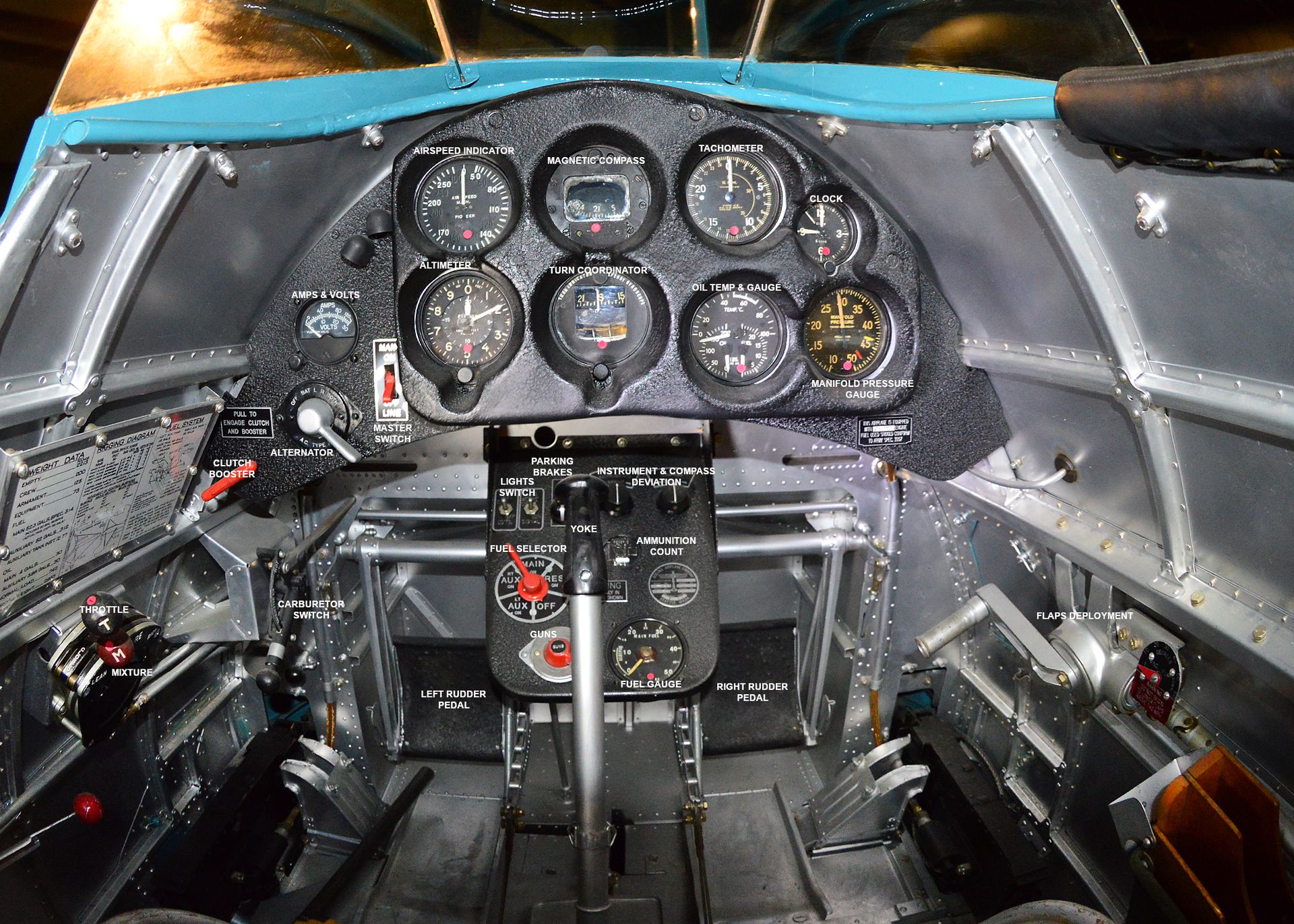
* * *
Map of Manila, 1920
On this map, important places in the story, like the Ateneo de Manila, Philippine General Hospital, and Sternberg Hospital could be found. It could be hinted that the city proper of Manila is quite too small; as it shares boundaries with Quezon City and Rizal Province.
Source: Tewell, John. "Maps." Flickr, Yahoo!, 26 Feb. 2023, https://www.flickr.com/photos/johntewell/albums/72157631134828476. Original maps from the US Library of Congress collections.
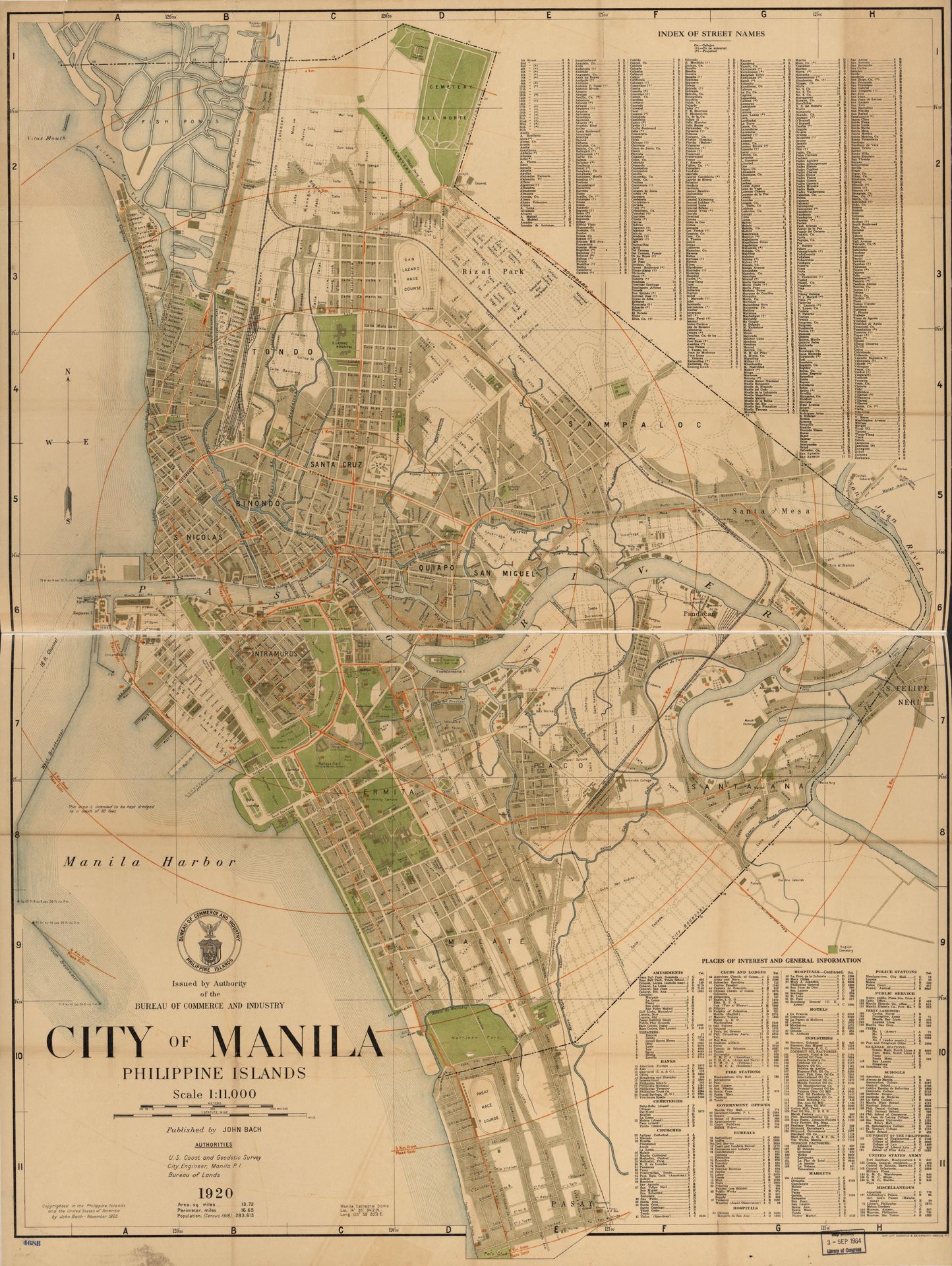
* * *
Map of Manila North, 1945
Definitely a post-war map made as it shows Manila with its neighboring Quezon City on the east and Rizal Province on the north, with Bulacan Province further north. Zablan Field and Camp Murphy could be found on the lower right as part of Quezon City. Sternberg Hospital and Intarmuros could be found on the lower left. Weirdly, Caloocan, Navotas and Pateros were parts of Rizal Province. It seems like the old C-roads then; only at that time, they were C-boundaries: with the City of Manila in the innermost, Quezon City in the middle, and Rizal Province in the outer.
Source: Tewell, John. "Maps." Flickr, Yahoo!, 26 Feb. 2023, https://www.flickr.com/photos/johntewell/albums/72157631134828476. Original maps from the US Library of Congress collections.
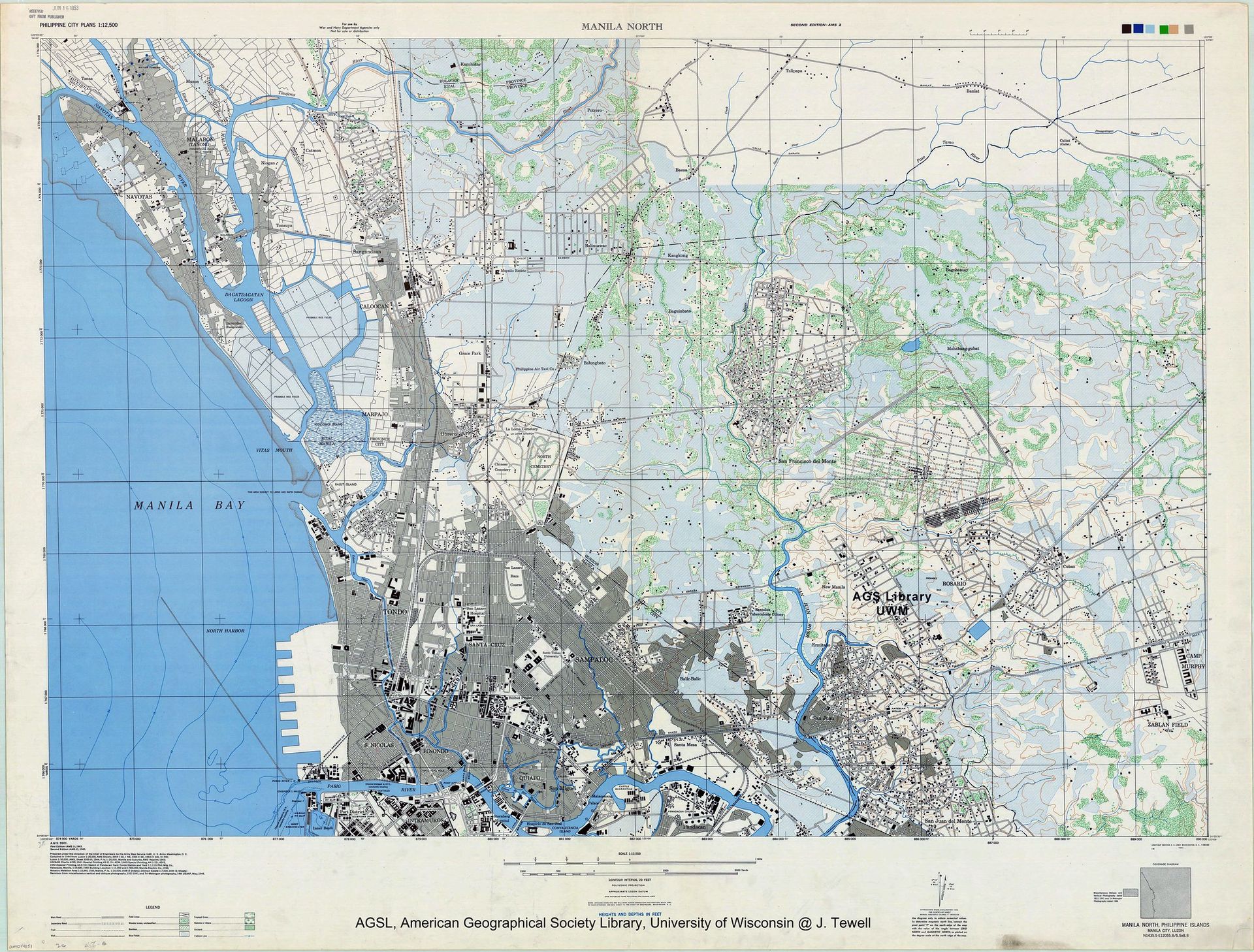
* * *
Map of Manila South, 1945
Nielson Airport could be found off-north of the center of the map as part of Makati, then part of Rizal Province along with Pasay and Mandaluyong, and everything south and east of those three. Nichols Field could be found off-south of the center of the map. Fort William McKinley could be found a little to the right of Nielson Airport. And you'll be seeing the Central National Airport (proposed) jutting out as a white polygon at the Manila Bay where the current PICC, CCP, Star City, Sofitel and other establishments stood now. Whatever may be the reason for it not to be made, despite its great potential that would definitely just be all about expansion than the current issue of needing to find a new airport's location, it hadn't come to fruition; definitely because of corruption. Also, it definitely shows how big Rizal Province at that time was.
Source: Tewell, John. "Maps." Flickr, Yahoo!, 26 Feb. 2023, https://www.flickr.com/photos/johntewell/albums/72157631134828476. Original maps from the US Library of Congress collections.
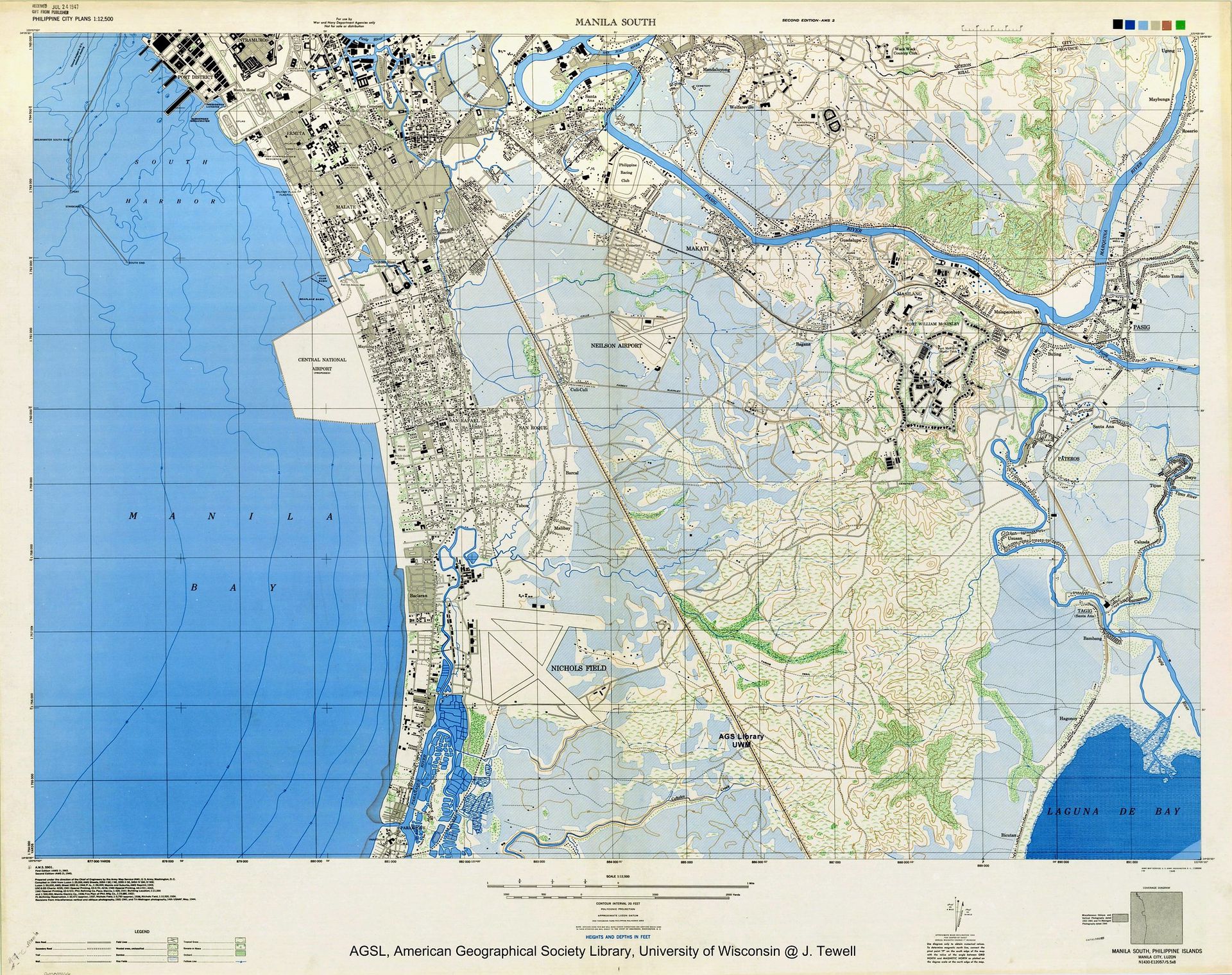
* * *
Uppermost portion of the Philippine Aeronautical Chart - Southern Luzon and Northern Visayas, 1941
Okay, I love maps. One of the very reasons why I've decided to be a pilot. And the kind of maps I loved the most are those aeronautical charts. Throughout the writing process of the titular chapter and the succeeding chapter, I realized that I needed to be assured of what flight route did Basa actually took on that fateful day of 12 December 1941. Hence, I took my Philippine Aeronautical Chart (World Aeronautical Chart scaled to 1:1,000,000) to make a flight route of myself of how the flight would definitely be for a three-hours' worth of fuel in correlation alone of distance and cruising speed. (Anyway, I'll be discussing about it on a separate chapter by the time we reached that part.) And then, I suddenly became curious of when did aviation charts were actually first made.
Aviation was relatively a very young industry during the 1940s. Less than 40 years ago before World War II, the Wright brothers succeeded in their first fixed-wing flight of 12 seconds and 120 ft (37 m) distance, and just 40 years later, airplanes were being used in World Wars. Hence, that form of advancement definitely focused the attention to the industry itself. There was no doubt that the first maps were that of nautical maps; and they definitely used it for a moment until they were already in need of aeronautical charts. After all, the first Jeppesen charts (made by Capt. Elrey Jeppesen that were used nowadays for instrument flight rules) were first introduced to the public in 1936; so there should be some aeronautical charts around that time. Not to mention that during my visit to the Philippine Air Force Aerospace Museum, I found out that pilots were already using flight computers, so there should be some maps existing.
I was actually just searching for samples of how aeronautical charts looked in 1941; but it took me by surprise that the first on my search would definitely be the one I was really after for. Philippine Aeronautical Charts already existed at that time, giving me then a good grasp of how the charts looked. The one I've found were Sectional Charts (scaled 1:600,000; but Sectional Charts are now scaled 1:500,000). Anyhow, I needed to see this, and gave me a good grasp of how aeronautical charts changed and evolved over time. And it assured me that any flight on that fateful day was definitely properly planned, and what I've envisioned was probable. Or rather, very possible to happen.
Source: Geographicus Rare Antique Maps. "Northern Luzon No. 1 Sectional Aviation Chart. Philippine Aeronautical Chart. / No. 2 Southern Luzon and Northern Visayas." 1941. https://www.geographicus.com/P/AntiqueMap/philippineaerochart-uscgs-1941.

Bạn đang đọc truyện trên: AzTruyen.Top